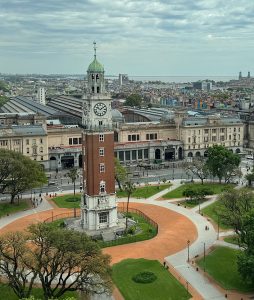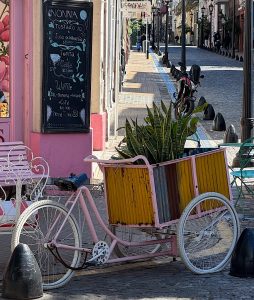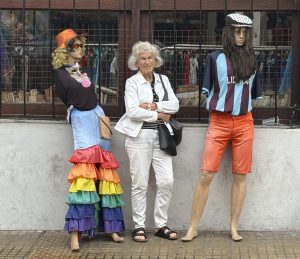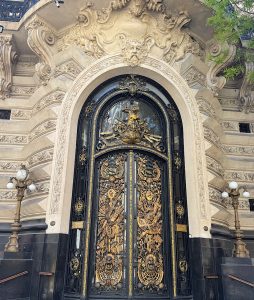The wall works in the San Telmo neighborhood in Buenos Aires are more than graffiti. These detailed coverups camouflage shutters and other security screens outside of regular hours. The details on that face, the colours on that roll-up and the picture-within and picture-over create a street escape from what emerges as social commentary.

The landmark centered on the railway station delivers an overview of the city but also gives a clouded-over view. The rail lines pausing between runs in the station are going everywhere connecting Buenos Aires to all of South America. The pedestrians rushing from trains to busses to homes to hovels have polished the stones. The grass has been spared from the daily trampling of feet. On looking across the cityscape the eye misses the shadow life behind the rails. One might not notice that where the tracks end a life of often detracted persons begins. We are seeing less!

On the avenue Bolivar this planted carrier bycyle invites everyone to walk-on. But behind the pink wheels there is a coffee bar. Pastry palace might be more appropriate. The rusted link between sprockets says clearly that no one is going anywhere fast. We are moving slower!

On the street, three hucksters mimic the the Three Musicians and as in the Picasso painting, the two poets are silent. (Apollinaire died and Jacob joined a Monastery). This is a silence of having learned. The lessons again highlighted with listening. Someone needs to explain to the teachers along the way that hearing deteriorates with age. We are listening less.

The traditional bronze door at the entrance to the naval club hints at the last exit for many of its visitors. We need to close the door on this trip — having seen that we are seeing less and hearing less and moving less—yet aware that our spirits have been nurtured for living more!
